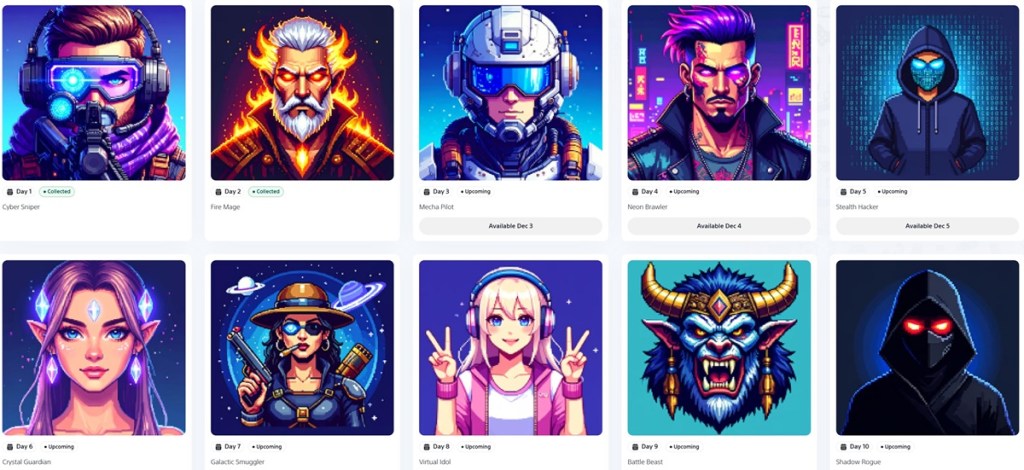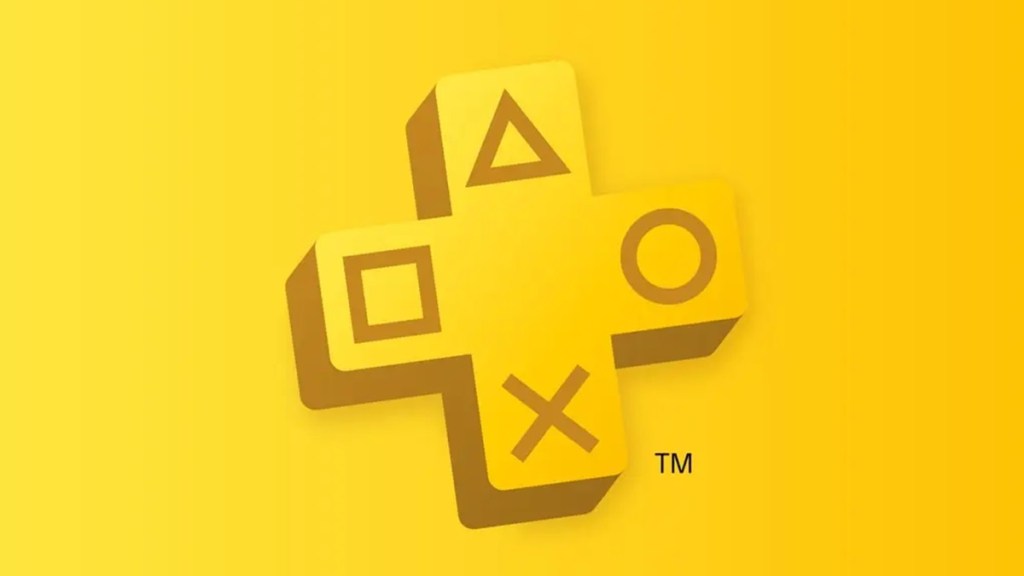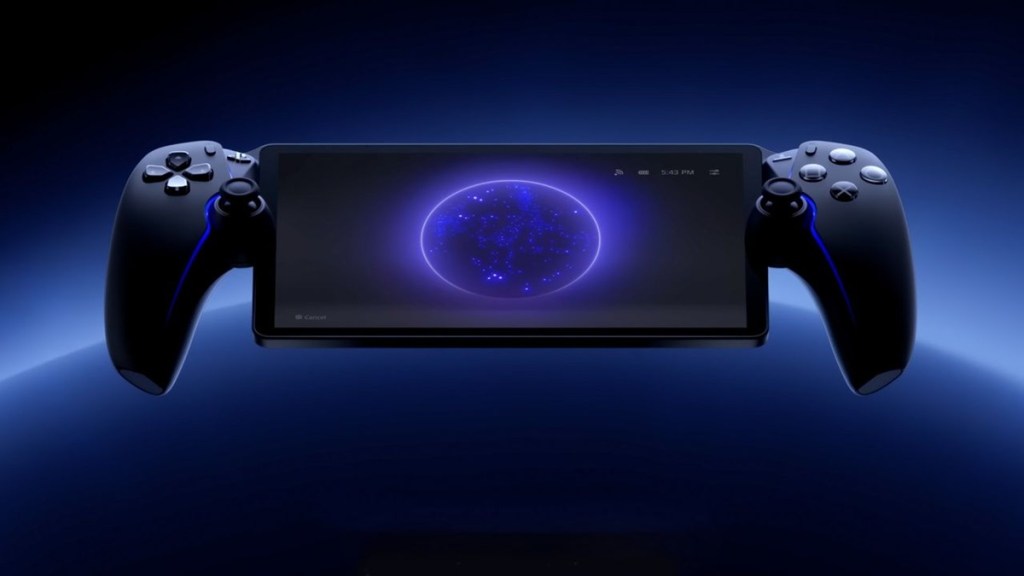The post AirPods 4 Are Now Cheaper Than Renewed Models at 45% Off as Apple Continues Its Clearance Push appeared first on Kotaku.
from Kotaku https://ift.tt/Hr8Rclz
The post AirPods 4 Are Now Cheaper Than Renewed Models at 45% Off as Apple Continues Its Clearance Push appeared first on Kotaku.
The post Echo Dot Goes for Peanuts, Amazon Sells Alexa Speakers Cheap Enough for Every Home to Own One appeared first on Kotaku.
The post Lenovo Has No Sale on Its Site, Goes Nearly 80% Off on This 32GB/1TB Model Quietly via Amazon appeared first on Kotaku.
The post LEGO Holds Star Wars Jango Fett’s Starship at Its Black Friday Low to Move Holiday Stock appeared first on Kotaku.
The post Apple Quickly Drops M4 Mac Mini Price Again After Its Post-Black Friday Hike to Rival Windows Mini PC Holiday Deals appeared first on Kotaku.
The post Netflix Could Be About To Buy HBO, Warner, And Batman Himself appeared first on Kotaku.

Sony recently released a revised PS5 DualSense controller model, and it appears that battery life is one of the issues it addressed. As we reported back in October, the new DualSense controllers don’t feature a second mic or the rumored removable battery. Now, a console modder and repairman claims that the revised DualSense’s battery life is nothing to scoff at.
The modder/technician, who goes by the username Modyfikator89 on X, tested the CFI-ZCT2W series of DualSense for over 15 hours. Features like haptics, adaptive triggers, speaker, and mic were used in-game across titles like Astro’s Playroom and Fortnite.
The result? A marked improvement in battery life that “crushes” previous models, including the DualSense Edge. As for how Sony achieved this, Modyfikator89 stripped down the controller to show numerous internal changes from BDM-010 to BDM-060, which apparently also lead to cooler temperatures in the revised model.
Thermal images also confirmed ultra-low charging temps (~26°C), proving efficient engineering. This is the controller we've been waiting for. pic.twitter.com/SkqwtZizR5
— modyfikatorcasper (@Modyfikator89) December 4, 2025
Although this is great news, stick drift remains a sore point for PS5 players, and I’ve personally been a victim of the issue at least twice in this generation. My limited-edition Spider-Man controller was used extremely sparingly, but much to my dismay, it developed a recurring stick drift problem.
Here’s hoping that’s the issue Sony addresses next.
The post PS5 DualSense Controller Updated With Battery Improvement appeared first on PlayStation LifeStyle.
The post Amazon Clears JBL Go 4 Tiny Bluetooth Speaker Leftover Cyber Monday Stock, Goes to Record Low appeared first on Kotaku.

A fantastic 2015 PS4 game (playable on PS5) is 95% off in a limited-time PS Store deal — its lowest price yet since launch. Frictional Games‘ horror action adventure title Soma costs just a few dollars and is worth checking out at its current sale price if you haven’t played it yet.
Soma can be yours for just $1.49 if you purchase it before December 23. The game received positive critic reviews upon launch, and fared even better with players.
Soma is set in an underwater facility called Pathos-II, which has been isolated. Twisted creatures lurk in the facility, whose fate rests in your hands.
“The radio is dead, food is running out, and the machines have started to think they are people,” a synopsis reads. “Underwater facility Pathos-II has suffered an intolerable isolation and we’re going to have to make some tough decisions. What can be done? What makes sense? What is left to fight for?”
Soma isn’t a lengthy game, and its 100% completion (including all trophies) takes just 10 hours. Unfortunately, however, there’s no Platinum trophy to reward players for their time. But that shouldn’t be a dealbreaker.
The post Hit PS4 Action Game 95% Off in PS Store Deal, Lowest Price appeared first on PlayStation LifeStyle.

Sony is under fire after releasing a set of new free PSN avatars as part of the digital PlayStation Advent Calendar 2025. The PlayStation Advent Calendar is an annual online activity that, for reasons unbeknownst to us, is limited to a few countries.
Available in parts of Europe and Canada, the Advent Calendar has players engage in various activities over 24 days, with daily prizes awarded. Prizes range from physical goods, like the limited edition Astro Bot DualSense controller, to digital rewards, like PS Plus or PS Store gift cards and PSN avatars.
The PSN avatars are pretty much awarded to everyone daily for partaking in the activity, and it’s these freebies that have come under fire. As highlighted by players, all the free avatars are low-effort, generic images that seem to have been crafted with Generative AI.
A preview courtesy of ResetEra is below:

Frankly, some of these avatars look very similar to PS3 avatars that I claimed back in the day. That said, it would have been nice to see a little bit of effort put into this activity.
It’s unclear why the Advent Calendar isn’t available outside of a few countries. But to be fair, main markets like the United States get preferential treatment from Sony year-round. Being left out of one activity isn’t all that bad!
The post ‘Generic’ New Free PSN Avatars Have Players Blasting Sony appeared first on PlayStation LifeStyle.

PS5 is getting a promising new open-world action RPG, the debut trailers for which look stunning. The God Slayer is an Eastern steampunk RPG brought to us by Chinese developer Pathea Games, the studio behind My Time at Portia, Ever Forward, and more,.
The God Slayer was originally revealed as a PlayStation China Hero Project back in 2023. It looks like Sony has since lost PlayStation exclusivity or decided not to fund the project, as the game is also headed to Xbox Series X|S alongside PC.
Nevertheless, it’s an intriguing new game. Check out its cinematic and gameplay trailers below:
Players are an Elemancer named Cheng, whose family was slain by the Celestials. Cheng is now on a mission to save his people and avenge his family.
“To achieve this, you will learn to harness and enhance your elemental powers, acquire new skills from ancient scrolls and elemental masters, and refine the flow of qi within you,” reads an official description. “With dedication, you will gain the power to challenge even the mightiest Celestials.”
The God Slayer was previously announced for 2027. The new trailers don’t come with a release date or window.
The post PS5 Getting Promising New Open World RPG, Trailer Looks Great appeared first on PlayStation LifeStyle.
The post Galaxy Watch 8 Classic Stays at Its Cyber Monday Low as Samsung Quietly Clears Leftover Black Friday Stock appeared first on Kotaku.

Sony is rolling out PS5 system software update 25.08-12.40.00 for December 2025 starting early this morning, and it’s the least exciting update of the year. From the looks of it, the company wants to plug some vulnerabilities and exploits ahead of the holiday.
Complete patch notes for today’s update are as follows:
Do note that this update is being released in phases, so if you’re not being prompted to update your PS5 firmware, there’s nothing to worry about.
Speaking of messages and usability, Sony has quietly made some changes to the PSN messaging system, introducing the ability to see when players are typing messages, the ability to delete sent messages, and read receipts.
The new features are available both on the console and the latest version of PS App. However, as we pointed out recently, read receipts are turned on by default, so if you’re concerned about privacy, make sure to turn them off by following the steps we outlined in this article.
We’ll update our readers if players notice any stealth changes in today’s PS5 firmware update.
The post New PS5 System Update Released But Don’t Get Your Hopes Up appeared first on PlayStation LifeStyle.
The post Nintendo Switch OLED With Joy-Con Falls to a Clearance-Level Low as Amazon Has Only Limited Grade-A Renewed Units Left appeared first on Kotaku.

Sony is unexpectedly dropping a new limited-edition PS5 DualSense controller early in 2026, and we didn’t see this one coming. Not only is the DualSense releasing soon, but it will also finally celebrate a game that has been a huge hit on PlayStation for over five years now: Genshin Impact.
The Genshin Impact limited-edition controller features “an ethereal white, gold, and green palette adorned with arcane glyphs of a fantasy realm, including emblems of Traveler Twins Aether and Lumine and their trusted companion guide, Paimon,” per Sony. The accessory coincides with the launch of Genshin Impact Version Luna III.
Check out a trailer below:
I don’t play Genshin Impact, but I’m quite liking this controller, especially the color scheme. And going by comments I’ve seen on gaming forums and social media, I’m not the only non-player with eyes on this one.
The limited-edition controller will release on January 21, 2026, in Japan and Asia. It’ll launch on February 25 in North America, Central and South America, Europe, the Middle East, Africa, Australia, and New Zealand.
In regions where PlayStation Direct is available, preorders will go live on December 11. The Genshin Impact controller will also be available at retail for $84.99 / €84.99 / £74.99 / ¥12,480.
The post Sony Reveals Gorgeous New PS5 Controller We Didn’t Expect appeared first on PlayStation LifeStyle.

The developer behind the worst PS5 action-adventure game of 2025 really wants players to give it a chance, as it surprise-dropped a free version no one expected. MindsEye, brought to you by Leslie Benzies of Grand Theft Auto fame, now has a “free starter pack” on the PS Store.
We’re not sure how to classify MindsEye’s free starter pack, as it neither falls in the category of a demo nor a trial. While the pack contains a ton of demo content, it’ll regularly be updated with new playable content. I guess the hope here is that at some point, players will want to purchase the full experience.
“In the campaign demo, you play as Jacob Diaz, a former soldier with a neural implant and fractured memories, drawn into an explosion that erupts into a high-speed chase and fierce firefight through the city,” reads an official overview. “ARCADIA offers a variety of challenges, from survival scenarios to combat encounters, ground races, and sky races, giving you new ways to play beyond the campaign.”
The starter pack contains the Robin Hood demo mission.
MindsEye holds a Metacritic score of 28/100 for the PS5 version. Other platforms didn’t earn stellar ratings either.
The post 2025’s Worst PS5 Game Gets Free Version No One Asked For appeared first on PlayStation LifeStyle.

Sony has quietly increased the list of games leaving PS Plus Extra and Premium in December 2025 yet again, adding two more games. Since the official confirmation of all the departures two weeks ago, PS Store‘s “Last Chance to Play” section has been updated twice, bringing the total number of additional departures to three.
Without further ado, an updated list of games leaving PS Plus Extra and Premium in December is as follows:
Among the additional departures, River City Melee Mach is the shortest game to beat, followed by 11-11 Memories Retold. As a reminder, 11-11 Memories Retold has free story DLC “WarChild Charity” on the PS Store that all players can download.
All the aforementioned games will leave the service on December 16, which is when the next set of PS Plus Extra and Premium games will go live.
The post Games Leaving PS Plus in December Increased for a Second Time appeared first on PlayStation LifeStyle.
The post Amazon Drops the New Fire TV Soundbar Plus to an All-Time-Low, Losing All Margin to Rival JBL and Bose appeared first on Kotaku.
The post Forget Nintendo, Sony Goes No-Margin on the PlayStation Portal Remote Player as It Hits an All-Time Low After Black Friday appeared first on Kotaku.
The post Amazon Sells Own Echo Show 5 at Cost for Black Friday, Zero-Margin Play No Rival Can Touch appeared first on Kotaku.
The post Apple Keeps the M5 MacBook Pro at All-Time Low as It Begins Clearing Out Post–Black Friday Stock appeared first on Kotaku.
The post Day After Black Friday Ends, Microsoft Suddenly Offloads Xbox Controllers at Record Low appeared first on Kotaku.
The post Apple Breaks Margin Lines as AirPods 4 at Nearly 50% Off Are Priced Like Budget Earbuds appeared first on Kotaku.
The post Samsung 9100 PRO SSD Falls Below $0.10 per GB Across All Capacities, Black Friday Just Broke the Price Floor appeared first on Kotaku.

Sony has quietly added another title to the list of games leaving PS Plus Extra and Premium in December 2025, and we highly recommend playing this one before it departs the catalog. Bandai Namco-published 11-11 Memories Retold, which has free DLC on PS Store, will be pulled on December 16.
For some reason, Sony has yet to update the PS Plus Last Chance to Play section, but 11-11 Memories Retold’s impending removal is confirmed by its PS Store page. I’ve checked both EU and US pages, and can confirm that its departure date of December 16 is listed on both. That happens to be the day the next set of PS Plus Extra and Premium games will go live.
Players can easily beat 11-11 Memories Retold by then, as it’s a short game. The free story DLC is called “WarChild Charity.”
Here’s an updated list of games leaving PS Plus Extra and Premium in December:
Here’s hoping that there are no further updates between now and December 16.
The post List of Games Leaving PS Plus in December Quietly Increased appeared first on PlayStation LifeStyle.
The post Beats Studio Pro Is Nearly 60% Off as an Amazon Exclusive Deal, Apple Might As Well Be Giving It Away This Black Friday appeared first on Kotaku.

Sega has announced a free PS5 upgrade for its hit 2017 PS4 action adventure game. This one comes as a surprise because the company wasn’t particularly feeling generous when it comes to the 20th Anniversary native PS5 releases of Yakuza Kiwami, Yakuza Kiwami 2, and Yakuza 0 Director’s Cut, but Kiwami 2 players can claim a freebie come December 12.
All those who own a digital copy of Yakuza Kiwami 2 on the PS4 are entitled to upgrade to the PS5 port for free. This offer does not extend to disc owners, for some reason, and you must own a digital copy of Kiwami 2 by December 8, 8:59 a.m. PT at the latest. Future PS4 purchases will not be entertained.
As for the other titles, here are the upgrade paths on offer:
Sega has warned that save data does not carry over to the PS5 versions in any of the aforementioned games.
The post PS5 Players Surprised With Free Upgrade for Hit PS4 Action Game appeared first on PlayStation LifeStyle.

A great new PS5, PS4 action game has dropped a free demo for all players, and we highly recommend checking this one out. Neon Inferno is a colorful 2D gallery shooter that’s oozing with style, and has garnered positive reviews from critics and players alike.
Neon Inferno offers split-screen co-op play, so PS Plus isn’t required to play. Additionally, the demo isn’t locked behind a subscription. However, those with PS Plus Premium can stream the demo as well as the full game, should they wish to purchase it for $19.99 from the PS Store.
“As warring factions battle for control of a dystopian New York City, you enter the fray as an assassin for the Family — a notorious crime syndicate determined to eliminate its rivals and dominate the metropolitan battlefield,” reads an official overview. “Take control of Angelo Morano or Mariana Vitti and battle through the streets, blasting, deflecting, and slicing your way through your enemies!”
Check out a launch trailer below:
The PS Store demos collection has significantly improved, thanks to developers and publishers dropping free demos. The PS Plus Premium game trials section pales in comparison, but to give credit where it’s due, Sony has recently made an effort to improve the perk.
The post PS5 & PS4 Users Can Try New Hit Game for Free Without PS Plus appeared first on PlayStation LifeStyle.
The post Sony XM6 Headphones Hit an All-Time Low for Black Friday as Amazon Clears the Warehouse appeared first on Kotaku.
The post Google Pushes the Pixel Tablet Into Wild Black Friday Pricing, Margin Clearly Isn’t a Priority appeared first on Kotaku.
The post A <i>Far Cry</i> TV Show From The Creator Of <i>Alien: Earth</i> Is Really Happening appeared first on Kotaku.

Internet sleuths got their hands on early footage and gameplay info of a long-awaited PS5 remake of a popular PS2 game. Ubisoft acted fast and struck down alpha videos of Prince of Persia: The Sands of Time from YouTube, but not before mirrors cropped up elsewhere.
Ubisoft had announced a release date window of 2026 for Prince of Persia: The Sands of Time. A couple of days ago, Insider Gaming claimed that the game was planned for a January 2026 release. Now, leakers have managed to access an internal presentation with information we didn’t have before.
We won’t embed anything here for obvious reasons, but curious souls can find links to the presentation on Reddit.
If you prefer a written summary, the presentation sheds light on the character of Princess Farah, who is described as “cold-hearted, graceful, and strong-willed.” Although not a playable character, players will learn a lot more about her backstory in the remake, including her romance with the prince.
Gameplay-wise, time powers will return along with “rewind, slow time, stop time, and the mighty power of unleashing time.” Iconic puzzles and platforming are still the main focus, but with robust character control and a diverse range of moves. Combat has also been modernized.
Parkour has been rebuilt, and looks pretty good. Frankly, if there’s one thing Ubisoft is good at, it’s parkour, so we’re confident about this one.
Last but not least, The Sands of Time remake may add two new locations.
Keep in mind that this is an internal presentation from early 2024, and it’s possible that not all changes will make it into the final product.
The post Long-Awaited PS5 Remake Coming Soon, Gameplay Leaked – Report appeared first on PlayStation LifeStyle.
The post Samsung Offloads Galaxy Tab A9+ for Pocket Change, Better Than Budget Tablets Yet Priced Below Them appeared first on Kotaku.
The post LEGO Clearly Isn’t Prioritizing Profit as the NASA Apollo Lunar Roving Vehicle Goes Cheaper Than Expected This Black Friday appeared first on Kotaku.
The post Amazon Makes Zero-Profit Play on DualSense Edge, Sony’s Pro Controller Drops to Black Friday Chaos appeared first on Kotaku.
The post Samsung Goes Nuclear on 9100 PRO SSD Pricing, All Sizes Are Selling for a New All-Time Low appeared first on Kotaku.
The post Sony Dumps PS Portal at Cost Price, Zero-Margin Black Friday Gamble Against Nintendo Switch 2 appeared first on Kotaku.

A 2020 PS4 action game is being delisted by the end of December, its publisher has announced. Transformers: Battlegrounds is on the chopping block due to an expiring license agreement and will be pulled from all online storefronts, including the PS Store. The game is playable on PS5.
Developed by Coatsink, Transformers: Battlegrounds is among several games published by Outright Games that are being removed from the PS Store permanently. It was only a few days ago that the publisher announced the impending delisting of JoJo Siwa: Worldwide Party, The Addams Family: Mansion Mayhem, and Blaze and the Monster Machines: Axle City Racers.
Players who purchase Transformers: Battlegrounds will continue to have access to the game, and it will remain playable.
Those who are interested have the option to purchase several editions from the PS Store. Unfortunately, the game’s Complete Edition was recently on sale, but the promotion has ended, so it has reverted to its full price. We don’t think it’ll be back on sale at this point.
Transformers: Battlegrounds comes with 34 trophies, including the Platinum trophy. The game takes about 6 to 8 hours to beat, depending on your play style.
The post 2020 PS4 Action Game Being Delisted, Last Chance to Buy appeared first on PlayStation LifeStyle.

Sony has finally decided to show some love to the PS Plus Premium free game trials section, adding some great new games. As I recently wrote, we haven’t seen anything noteworthy in terms of game trials for a while, with the PS Store demos section far surpassing the Premium “perk.”
Over the last few days, Sony added the following batch of games to the PS Plus Premium trials section:
As a reminder, these trials are different from demos in that players have access to the full game and all its features for a limited period of time. Where demos don’t necessarily allow progress to carry over to the full game, trials do. You can carry your save data as well as trophy progress with you, should you wish to purchase the game you’re playing.
While it’s nice to see an updated game trials section, Sony still hasn’t said a word about the curious removal of all PSVR2 games from PS Plus Premium, which were one of the major benefits of the tier.
The post PS Plus Premium Finally Adds Some Decent Free Game Trials appeared first on PlayStation LifeStyle.

PSN and PS Store are partially down in a number of regions right now. The problem started occurring early morning on November 21, with players reporting slow loading and network timeout issues.
I can confirm that at the time of this writing, the PS Store is unable to load properly on both the web and the PS App. I’ve seen reports of the storefront slow loading on the PS5 and PS4 consoles as well.
The partial outage isn’t limited to a particular region. Over on Reddit, players in North America and Europe have reported network problems. I’m based in Asia and am experiencing the same issues.
Downdetector shows a spike in PSN complaints over the last hour, but Sony’s official service status webpage doesn’t show any outage in any of its services. However, the official PlayStation Network status checker is often slow to respond to issues, so rest assured, you’re not the only one unable to purchase games or browse your PS Plus catalog.
We’ll continue to keep an eye on the situation and update our readers when we have more information. Here’s hoping PSN stays put during the prime holiday season!
The post PSN, PS Store Partially Down Right Now appeared first on PlayStation LifeStyle.

A promising upcoming PS5 adventure game has dropped a free demo on the PS Store ahead of its 2026 launch. Developed by Tarsier Studios of LittleBigPlanet and Little Nightmares fame, Reanimal is a cooperative horror adventure game where you play as a pair of siblings on a quest to find and rescue their missing friends.
Reanimal’s demo isn’t locked behind PS Plus Premium, but you do need a subscription for online co-op.
The demo takes players to an abandoned mill in search of a missing friend, where players will also encounter the “disfigured captor” known as Sniffer. Players won’t have to defeat the boss, as Tarsier is “saving that delight for the full game!”
“In this unsettling tale, the emphasis is on tension and thick atmosphere, as you join the two orphans on a desperate search for hope and redemption in the direst of circumstances,” reads an official overview. “Traverse an intriguing but terrifying world, where the main path is only one part of the fragmented story.”
Reanimal will release for the PS5, Xbox Series X|S, Nintendo Switch 2, and PC on February 13, 2026. Publisher THQ Nordic has announced that the game will cost $39.99.
The post Promising 2026 PS5 Adventure Game Surprise Drops Free Demo appeared first on PlayStation LifeStyle.
The post <i>Fortnite’</i>s About To Get Its Weirdest Crossover Ever: A Missing Chapter From <i>Kill Bill</i> appeared first on Kotaku.

Sony quietly rolled out PS Portal system update 6.0.1 on the morning of November 20, but unfortunately, it doesn’t fix an annoying bug introduced by the previous patch. A strange bug causes the handheld to restart when players use the “sort” function when browsing the PS Plus Cloud library.
So, what does update 6.0.1 do? We’re glad you asked. Here are the patch notes:
“Depending on the system software version of your PS Portal, you might be asked to download and install multiple updates,” Sony added. “This is normal behavior and doesn’t indicate a problem with your device. After completing these updates, your PS Portal will be able to install future updates with a single download and installation.”
In other words, we have no idea what this system update does, and we won’t know until players notice something new or different.
We’ve seen reports that PS Portal firmware 6.0.1 takes ages to download and install, so if you experience something similar, don’t worry because it’s not just you. The good news is that there are no reports of the firmware update bricking devices.
We’ll update our readers when we have more info about the patch.
The post PS Portal Update 6.0.1 Released But It Doesn’t Fix Known Bug appeared first on PlayStation LifeStyle.

PS Plus Premium users have pointed out that Sony will soon remove the last two PSVR2 games remaining in the catalog. PSVR2 games were advertised as a perk of the most expensive PS Plus tier, and unless Sony adds another game or two next month, this benefit will quietly disappear.
When Sony revealed the next batch of games departing PS Plus yesterday, users on Reddit pointed out that two of the games — Arcade Paradise VR and Star Wars: Tales from the Galaxy’s Edge — are the only two PSVR2 games remaining in the catalog.
Arcade Paradise didn’t even last a year in the catalog, which is a standard length for most games. The title was added to PS Plus Premium in March 2025.
“I am hoping the explanation is that PSVR2 games will start being added to Extra instead,” an optimistic subscriber wrote on Reddit. “A large part of the reason I got PSVR2 is because I saw they were adding a game a month, so it sucks they didn’t keep it up,” a fellow member wrote.
PSVR2 games aren’t the only perks that Sony seems to be dropping support for. PS Plus Premium game trials section also sits neglected, mostly adding games that are nothing to write home about.
The post PS Plus Quietly Removed All PSVR2 Games From the Catalog appeared first on PlayStation LifeStyle.
The post Star Wars Unveils Major Black Friday Deal: Millennium Falcon LEGO Set Is Now Nearly Free appeared first on Kotaku.
The post Anker 14-in-1 Docking Station Drops to an All-Time Low, Making Multi-Device Charging Practically Pennies appeared first on Kotaku.

A 2004 PS2 game is being brought back to life with a PS5 remake, developer Mechano Story Studio has announced. Ghost Master: Resurrection is a “faithful remake” of the puzzle strategy game Ghost Master: The Gravenville Chronicles, the PS2 version of which was originally developed by Spiral House.
Ghost Master: Resurrection will release digitally and physically for the PS5 in March 2026. The disc copies will include four DLC packs that add new levels, modes, and features. DLC includes:
Mechano Story Studio also promised “a collector’s treat” in the boxed copies.
Those who purchase the digital edition will receive the “Spooky Pack,” which includes DLC 1 and 2.
The developer has promised “cutting-edge visuals, a new engine, and refined mechanics.”
“Take control of a mischievous army of specters, banshees, and ghouls to strike fear into the hearts of the living in the eerie town of Gravenville,” reads an official overview. “Solve puzzles, reveal dark secrets, and master the art of spectral strategy in this unique blend of supernatural tactics and offbeat humor.”
A PS Store page for Ghost Master: Resurrection has yet to go live.
The post PS5 Gets Surprise Remake of Long-Forgotten 2004 PS2 Game appeared first on PlayStation LifeStyle.

Players have been surprised with a free PS5 upgrade for a gorgeous 2019 PS4 sandbox adventure game, and it’s out soon. System Era Softworks’ award-winning Astroneer will receive a native PS5 port on November 20, and it’ll be free for all existing owners.
Astroneer’s PS5 version will support DualSense controller features, and native 4K resolution at 60 frames-per-second, among other bells and whistles. Check out a trailer below:
Astroneer’s PS4 version released in 2019 to positive reviews, and went on to win a number of awards. A two-hour free trial for the game is currently available to PS Plus Premium members, progress from which carries over to the full game (including trophies).
Astroneer can be played solo, or with up to four friends in co-op multiplayer mode. Players are tasked with colonizing planets while exploring them and learning how to survive.
“Our vast solar system includes seven wondrous planets that players can travel between and explore every inch of — from the entire spherical surface through treacherous layers of caves, all the way down to the mysterious core,” reads an official description. “Items that Astroneers craft and find in the world can all be snapped and connected together to create unique creations for any situation.”
Astroneer boasts a rating of 4.33/5 stars on the PS Store with nearly 6,000 verified votes.
The post Free PS5 Upgrade Announced for Award-Winning PS4 Adventure appeared first on PlayStation LifeStyle.
The post Sony Dumps the 1000XM5 at 40% Off, Now 2.5x Cheaper Than Apple’s Rival Headphones appeared first on Kotaku.
The post <i>Call Of Duty: Black Ops 7</i> Is Getting A Brutal Kicking From Players Over Its Use Of AI appeared first on Kotaku.
The post This 484-Piece LEGO Brick Box Is Nearly Free, Amazon Slashes 50% Off This Creativity Essential appeared first on Kotaku.
The post Galaxy Z Fold7 Lands Its First Major Black Friday Deal, Samsung Drops Foldable Phone to New All-Time Low appeared first on Kotaku.
The post This Tiny Gadget Lets You Connect Your Bluetooth Headphones to the Plane’s Screen, and It Costs Pennies appeared first on Kotaku.
The post AirPods 4 Are Nearly Free, Amazon Has Literally Never Gone This Low on Any AirPods appeared first on Kotaku.
The post This Dual-Port Fast Charger Pack Sells for Peanuts, Amazon Prices Each Unit Five Times Lower Than Apple appeared first on Kotaku.

Arc Raiders dev Embark Studios is shutting down its PS4 shooter a little over a year after launch, raising questions about last-gen ports at this point in the console’s life cycle. The Finals was originally released for current-gen platforms in 2023, but a year ago, Embark decided to port the game to the PS4, only to end up shutting it down on March 18, 2026.
Embark Studios blamed its evolving technology and the dated hardware’s inability to handle that technology for The Finals shutting down. “As we continue to advance, it’s become increasingly difficult to maintain and optimize PlayStation 4 support, without limiting the features and game modes we want to create,” a statement reads.
However, Embark would have known this a year ago when it released The Finals on the PS4. Players say that such releases are needlessly disruptive. Not only do they hold development back, but they’re also unfair to last-gen players who invest time in these games only to have the rug pulled out from under them in a short span of time.
Similar concerns are now being expressed for Marvel Rivals, which recently received a PS5 port.
The post Arc Raiders Dev Shutting Down Its PS4 Shooter After a Year appeared first on PlayStation LifeStyle.
The post Apple Watch SE 3 Drops Far Lower Than Amazon Usually Goes During Early Black Friday, Even Though It’s Newly Released appeared first on Kotaku.
The post Xbox Controller Is Selling for Pocket Change, Amazon Drops Its First Real Black Friday Deal appeared first on Kotaku.

Looks like PS5 is getting one of the Rockstar Games ports that players have been begging for, albeit much later than they expected. Earlier today, hawk-eyed fans spotted a fresh rating for Red Dead Redemption 1 for PS5, years after the popular classic received a native PS4 port.
For the longest time, PlayStation was the only platform locked out of playing Red Dead Redemption on modern platforms due to a lack of backwards compatibility with the PS3. When Rockstar Games announced a modern port, fans were left disappointed because RDR1 only received a native PS4 version (playable on PS5).
That looks set to change now, as ESRB has rated RDR for PS5, Xbox Series X|S, and Nintendo Switch 2. All three platforms will be getting a native version of the game for the first time.
That said, this development might just be a little too late. Players moved on from 2023’s disappointment and have since been hoping for a native PS5 version of Red Dead Redemption 2, which has been heavily rumored.
Unfortunately, there’s no sign of that beyond reassurances from insiders. And today’s ESRB rating makes no mention of the second game.
The post PS5 Might Finally Get One of the Rockstar Games Fans Requested appeared first on PlayStation LifeStyle.

The PS Store has dropped a fresh batch of free demos for PS5 games, one of which is a highly anticipated Square Enix RPG. During yesterday’s State of Play, the publisher surprise dropped Octopath Traveler 0 Prologue demo for both the PS5 and PS4, progress from which carries over to the full game.
None of the demos highlighted below requires PS Plus. However, those with Premium membership may be able to stream them rather than download.
Octopath Traveler 0
Players can create their character and play for three hours. All progress can be ported over to the full game. Players can explore certain areas of Orsterra, but cannot travel beyond the starting areas.
Kristala
Kristala is a PS5 dark fantasy action RPG with a focus on challenging combat, parkour, and exploration.
Jotunnslayer: Hordes of Hel
Jotunnslayer: Hordes of Hel is a PS5 roguelike set in realms inspired by Norse mythology. The game earned very positive reviews from players.
Windswept
Windswept is a cute puzzle platformer that has earned a positive response from players thus far. A PS5 demo is available now.
Dark Mystery
Last but not least, Dark Mystery is a 2017 puzzle platformer that received mixed reviews from players. Check out its free PS4 demo (playable on PS5) to see if it’s for you.
The post Free PS5 Demos Out for Major RPG & Several Promising Games appeared first on PlayStation LifeStyle.

The final PlayStation State of Play for 2025 took place yesterday, with Japan and Asia-focused PS5 and PS4 announcements. However, majority of the showcase was relevant to gamers around the globe. In case you missed it, we’ve collated all the announcements below.
Without further ado, here’s a quick rundown of November’s State of Play:
The post State of Play November 2025 Roundup: All PS5 Announcements appeared first on PlayStation LifeStyle.